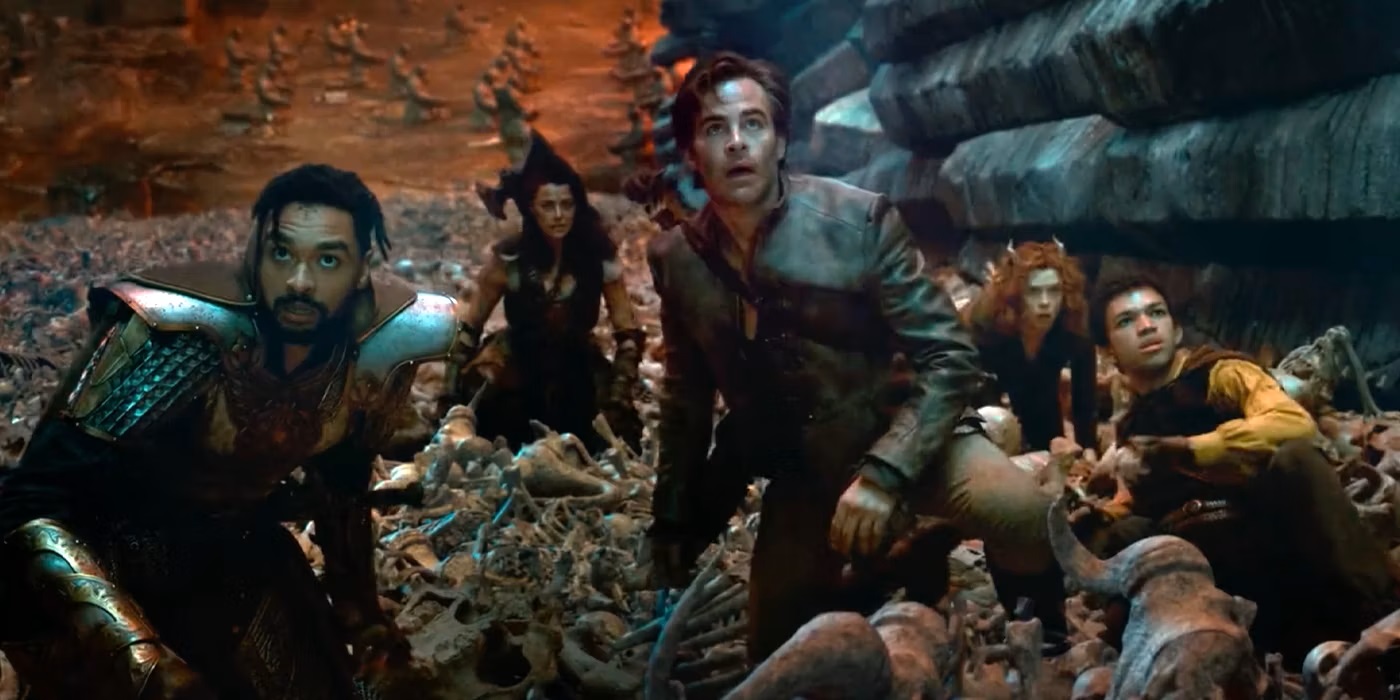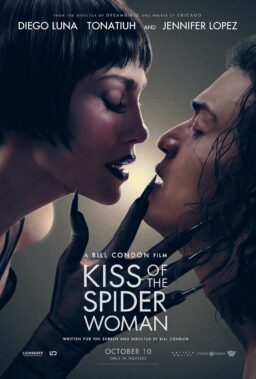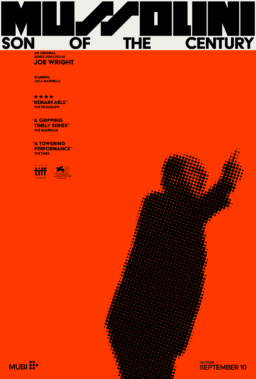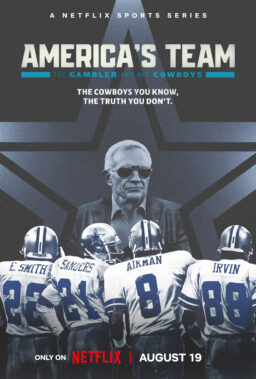In the lexicon of modern pop culture, few board games have made as many film/TV appearances as Dungeons & Dragons, Gary Gygax and David Arneson’s tabletop roleplaying game. From “Stranger Things” to “Community” to “Futurama,” TV shows have had their fun paying homage to (or, in plenty of cases, making fun of) D&D’s complicated gameplay mechanics and the enthusiastic players who spend hours poring over every map, monster manual, and miniature.
While there’s no shortage of projects that have enjoyed making tongue-in-cheek references to Dungeons & Dragons as an in-world board game, there are far fewer movies and TV shows interested in adapting the content of the game itself. Most famously, CBS’s 1983 animated series “Dungeons & Dragons,” which ran for three seasons, followed a group of child adventurers magically transported into the world of D&D.
But while an ’80s animated series is an ideal jumping-on point for children looking to get into Dungeons & Dragons, an animated series geared towards kids is hardly the medium to explore the vast worlds and dramatic character arcs you’re likely to find at the table of a campaign that’s been running for months, if not years.
Though most fictional depictions of D&D tend to feature teenage or child-aged characters as players (“Stranger Things”), Dungeons & Dragons is a game that can often be at its most potent when dealing with adult themes and complex interpersonal relationships. Combined with the potential for dazzling action set pieces inspired by the turn-based combat system, a live-action film (or at least, a live-action series with a plentiful budget) is the ideal medium for a sweeping, high-stakes Dungeons & Dragons campaign.

Certainly, there have been a handful of attempts to bring a game of Dungeons & Dragons to the big screen in live action throughout its 50-year history—the most prominent of which was a trilogy of films beginning with Courtney Solomon’s “Dungeons & Dragons” in 2000. Despite boasting a cast that included Jeremy Irons, Marlon Wayans, and Richard O’Brien, “D&D” sits at a startlingly low 9% on Rotten Tomatoes and was panned by critics and D&D aficionados alike—by the time the trilogy came to a close in 2012, sequels had been relegated to direct-to-video releases.
With such an abysmal reception to the last attempt to stage a big-budget live-action Dungeons & Dragons film, it’s no wonder that it took more than a decade for Hollywood to take another stab at a D&D movie. In the meantime, though, the Dungeons & Dragons scene continued to flourish, thanks in large part to the rise of Actual Play. With the benefit of hindsight, it’s no wonder that shows like “Critical Role” and “The Adventure Zone” thrived—the improvisational nature of the format is far closer to the reality of D&D than any scripted film or series could ever hope to be.
Finally, following the glowing reception of projects like Amazon Prime Video and Critical Role’s adult animated Dungeons & Dragons series “The Legend of Vox Machina,” Paramount finally took another gamble on a live-action D&D blockbuster: 2023’s “Dungeons & Dragons: Honor Among Thieves.”
Remarkably, despite a decade of pre-production woes (including bouncing from Warner Bros to Universal to Paramount), Jonathan Goldstein and John Francis Daley’s “Honor Among Thieves” is without question the most successful attempt at a live-action adaptation of Dungeons & Dragons. Though it underperformed at the box office (making just north of $208 million on a $150 million budget), the film received positive critical and fan reception, breaking D&D’s unlucky streak of live-action films.
But what makes Dungeons & Dragons so difficult to adapt in the first place, and how did this new remake manage to get it right? Perhaps more than anything, the key to “Honor Among Thieves”’s success is its dedication to maintaining a specific, self-aware tone. The biggest compliment I can give to “Honor Among Thieves” is that it feels like a game of Dungeons & Dragons—grandiose and dramatic with world-ending stakes, but never losing its sense of camaraderie or humor.

Yes, it may be overlong (although D&D sessions are infamously lengthy) and the characters are slightly cliched, but “Honor Amongst Thieves” understands how crucial the energy of the players is in making a campaign successful and channels the spirit beautifully. It’s a difficult line to walk between high fantasy and chaotic hijinks, but one that “Honor Among Thieves” makes look easy, thanks to not just the script and direction, but the cast.
Just as a game of D&D lives or dies on the commitment of its players, “Honor Among Thieves” soars not just because of how readily the cast (spearheaded by Chris Pine’s charismatic Edgin) embrace the quirks and eccentricities inherent in a movie based on a 50-year-old board game. Chris Pine’s rakish charm makes him a perfect bard (there’s no doubt Edgin’s character sheet has a 20 for charisma), while Hugh Grant hams it up as the dastardly rogue Forge, riffing about hot tea and tossing in ridiculous ad-libs that are just the right side of silly.
Michelle Rodriguez delivers plenty of stone-faced one-liners as the aptly named barbarian Holga Kilgore, and Regé-Jean Page is an undeniable scene stealer as the gallant, devastatingly heroic paladin Xenk, a character who perfectly encapsulates the kind of one-off character players might encounter when they need a hand dealing with a particularly difficult encounter.
Though part of the beauty of Dungeons & Dragons is the near-endless options players have when it comes to character building, there are still classic archetypes that “Honor Among Thieves” understands and utilizes to make its characters feel truer to the setting. Doric is a Tiefling and therefore scared of humans, devout paladin Xenk can quite literally smell evil, and Edgin can always be relied upon to inspire his allies with his bardic talents.
In addition to channeling the spirit of the game, “Honor Among Thieves” also excels when it comes to visualizing game mechanics and translating them to the modern big-budget action formula. Edgin has the classic “dead wife” fantasy backstory, but the film also blends this trope with elements from D&D—not only did he lose his wife, but he left the Harpers, a network of do-gooders who frequently pop up in D&D campaigns.
Edgin’s fall from grace and exile from the Harpers is made all the more interesting when considering how the film employs the classic mechanic of Dungeons & Dragons to fit its storytelling purposes. During flashback sequences, he makes several references to his Harper “oath”—oaths being sacred pacts that are held by a class of heroes called paladins. In D&D, if a player’s paladin breaks their oath, they’re forsaken by their peers and lose all access to their previous magical abilities—a piece of worldbuilding that adds a layer to Edgin’s tragic backstory.
For Edgin to be not just a bard, but also have complicated in-world history as a paladin who broke his oath not only gives the character depth beyond the conventional goofy, freewheeling jester or troubadour type but also speaks to Goldstein and Daley’s knowledge of and appreciation for D&D as a game.
The use of game mechanics to further character isn’t just limited to Edgin, either. Justice Smith’s Simon is a wild magic sorcerer (a class whose power will randomly fluctuate and yield unpredictable results), and his entire character arc is hinged around his inability to control the powerful magic he inherited from his bloodline. Just as wild magic can turn the tide in a game of D&D in real life, Simon’s wild magic surges come in clutch for the party at crucial moments as an ability that Simon eventually learns to wield to his advantage.

Then there’s the more cinematic character abilities: Wild Shape (that is, the power to transform into animals at will) is a tentpole of the druid class in D&D, and thus Doric (Sophia Lillis), the party’s druid, makes ample use of the ability in combat. Though “Honor Among Thieves”’s action sequences are across-the-board impressive, Doric’s wild-shaping is the central conceit of an epic chase sequence in the middle of act two, which follows our perpetually shapeshifting hero as she makes her escape from the fearsome Red Wizards of Thay.
Speaking of the Thayan wizards, yet another element of world-building that “Honor Among Thieves” nails (again, thanks in large part to Goldstein and Daley’s script) is how it integrates preexisting characters, organizations, and locations with original characters and locales created for the film. In addition to the aforementioned Harpers and the wizards of Thay (both of which are factions players may come across in a home game of D&D), “Honor Among Thieves” namedrops (or outright features) all manner of famous D&D iconography: the wizard Elminster, the city of Waterdeep, and the Underdark are all referenced, among countless others.
Then there’s the fantasy creatures: Holga and Edgin make their daring prison escape with the assistance of an unsuspecting Aarakocra (a giant, anthropomorphic eagle) in the film’s riotous opening sequence. Whether it’s the use of intellect devourers for a gag about the party’s smarts (or lack thereof) or a baby Tabaxi in peril during Xenk’s introduction, “Honor Among Thieves” dapples its world with countless fantastical creatures—giving the production team ample opportunity to experiment with effects, and lending even more legitimacy to the film’s understanding of D&D.
Even the city of Baldur’s Gate gets a mention in “Honor Among Thieves”—a remarkable coincidence considering just months later Larian released its massively popular video game “Baldur’s Gate 3,” which is also set in the world of Dungeons & Dragons. One wonders if “Honor Among Thieves” might’ve fared better at the box office had it been released after “BG3″—Larian’s story-heavy RPG took the video game world by storm, helping further cement Dungeons & Dragons in the public consciousness.
References to elements of the game extend far beyond namedrops and cameos—though they aren’t named as such by the characters, the fight scenes in “Honor Among Thieves” are chock full of spells that players would likely be casting during encounters in a home game of D&D. Simon entertains patrons (or tries to) with the Blur spell, Red Wizard Sofina uses Time Stop multiple times to thwart Edgin and Co. From Chain Lightning to Counterspell, the characters of “Honor Among Thieves” (most prominently Simon) handle their conflicts with spells and strategies straight out of the D&D Player’s Handbook.
Though it may not have made enough of a dent at the box office to warrant a sequel, “Dungeons & Dragons: Honor Among Thieves” defied expectations to deliver a cohesive, entertaining, heartfelt ode to Dungeons & Dragons that both honors the game whenever possible while still crafting a cohort of engaging characters brought to life by an ingenious cast.











